One of the best-known photographers of the 20th century, Ansel Adams’ iconic photos of Yosemite National Park and the American West helped advocate for the preservation of the natural environment. His photos of Yosemite, a place that profoundly influenced his life and career, are among his most celebrated works.
Early Encounters
Adams first visited Yosemite National Park in 1916 at the age of 14. Armed with a Kodak Brownie camera, he was immediately captivated by the park’s majestic landscapes. This initial visit sparked a lifelong passion for photography and the natural world. The beauty of Yosemite’s granite cliffs, towering sequoias, and cascading waterfalls provided endless inspiration for Adams, who returned to the park year after year.
In 1919, Adams joined the Sierra Club, an environmental organization dedicated to preserving the wilderness. He spent several summers working as the caretaker of the Sierra Club’s LeConte Memorial Lodge in Yosemite Valley, where he honed his photographic skills and developed a profound appreciation for the park’s natural beauty.
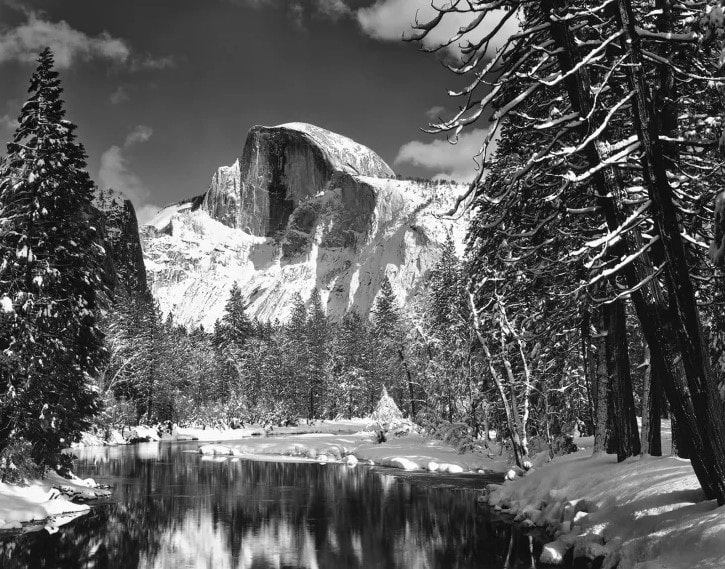
Adams’ early works in Yosemite were characterized by their sharp focus and high contrast, capturing the park’s dramatic landscapes in stunning detail. He often sought out scenes that highlighted the interplay of light and shadow, capturing the essence of the natural world in its most pristine form. One of his most famous early photographs, “Monolith, the Face of Half Dome,” taken in 1927, exemplifies his ability to convey the grandeur and majesty of Yosemite’s iconic landmarks.
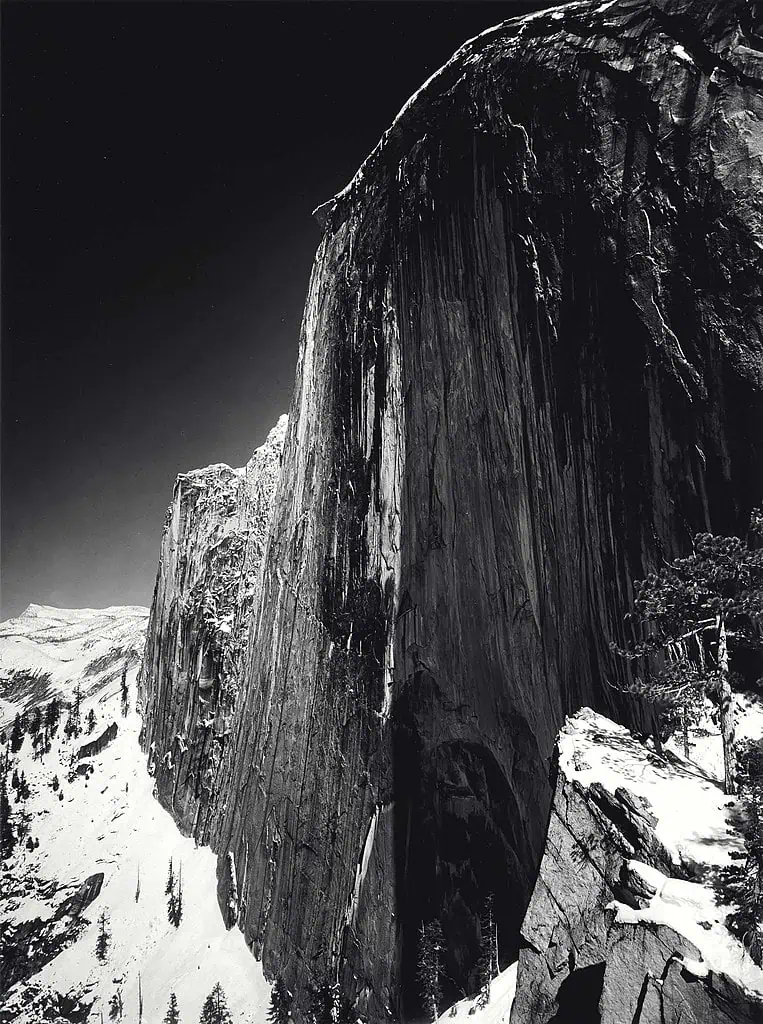
Technical Mastery and Artistic Vision
Adams was not only a master of composition but also a technical innovator. He developed the Zone System, a photographic technique that allowed him to control the exposure and development of his images with precision. This system enabled Adams to achieve a remarkable range of tones in his black-and-white photographs, from the deepest blacks to the brightest whites.
His meticulous approach to photography was matched by his artistic vision. Adams saw beyond the physical features of Yosemite, capturing the essence of the park’s wildness and beauty. His images evoke a sense of awe and reverence, inviting viewers to appreciate the natural world in all its splendor.
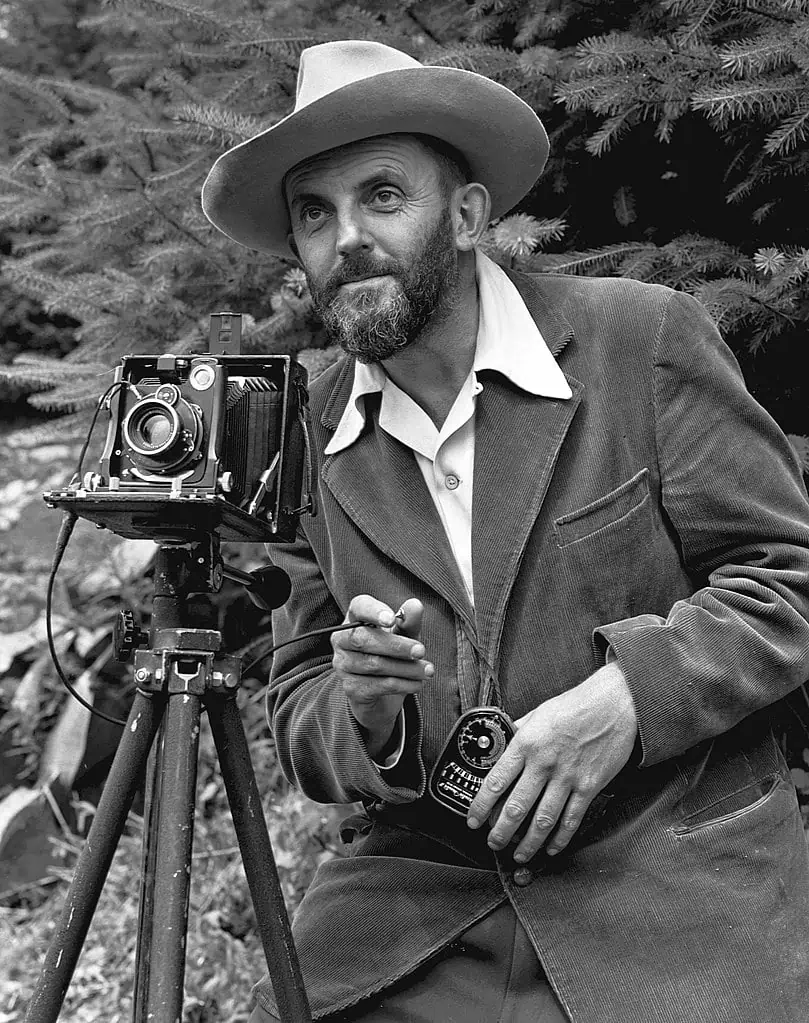
Conservation Efforts
Adams’ work in Yosemite was not just about creating beautiful images; it was also about advocating for the preservation of the natural environment. His photographs played a crucial role in the American conservation movement, raising awareness about the importance of protecting national parks and wilderness areas.
In the 1930s, Adams’ photographs were used to promote Yosemite and other national parks, helping to secure their protection and funding. His images were featured in publications, exhibitions, and books, reaching a wide audience and inspiring a greater appreciation for the natural world.
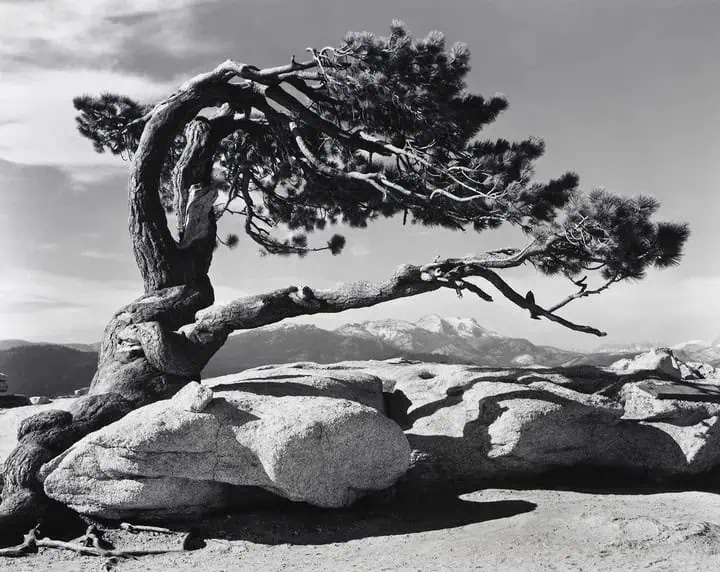
Legacy and Impact
Adams’ legacy in Yosemite is enduring. His photographs continue to be celebrated for their technical excellence and artistic beauty. They serve as a powerful reminder of the importance of preserving our natural heritage for future generations.
The Ansel Adams Gallery, located in Yosemite Valley, stands as a testament to his enduring influence. The gallery showcases Adams’ work and promotes the appreciation of photography and the natural world. It is a place where visitors can connect with Adams’ vision and gain a deeper understanding of the park that inspired him.
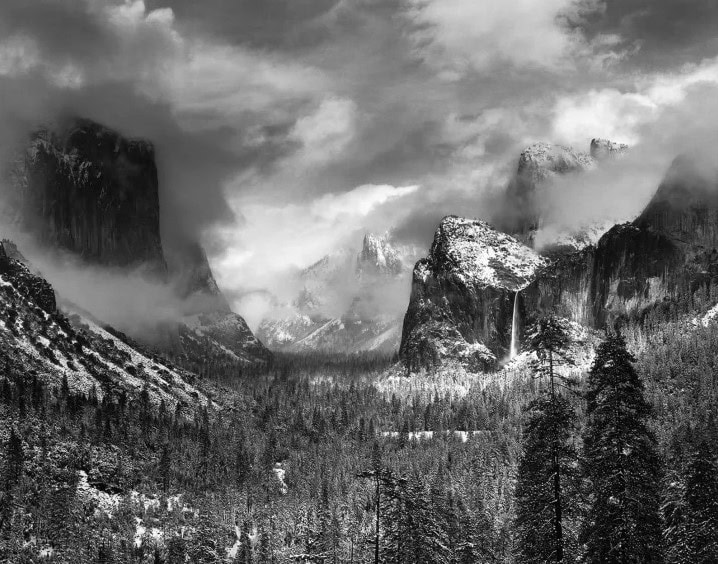
Top photo of Ansel Adams in Yosemite National Park c. 1942 (Photo courtesy the Cedric Wright Family)

